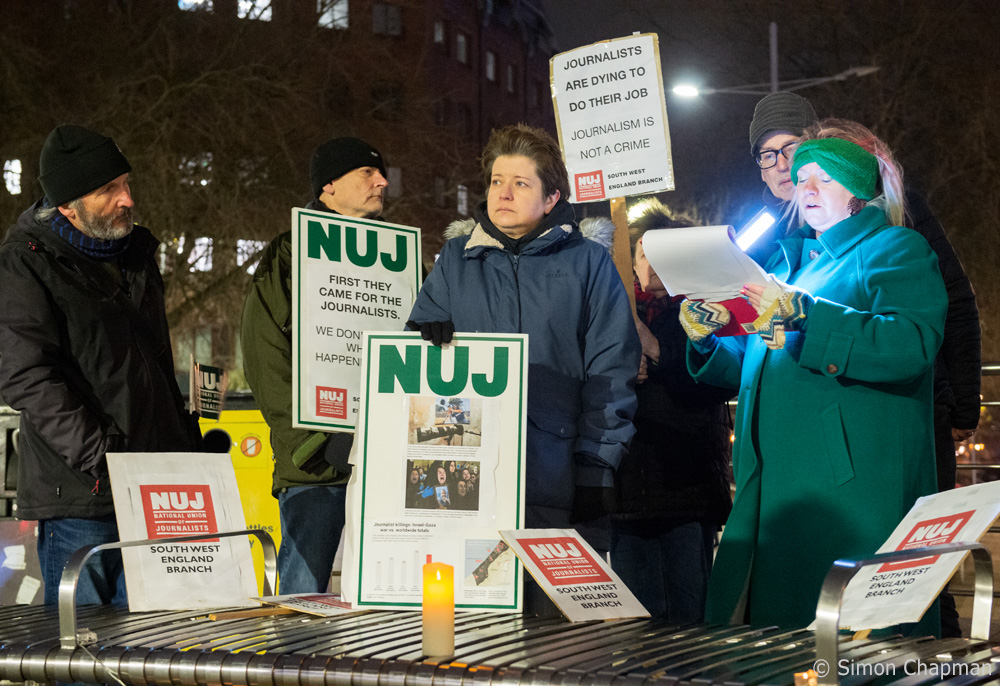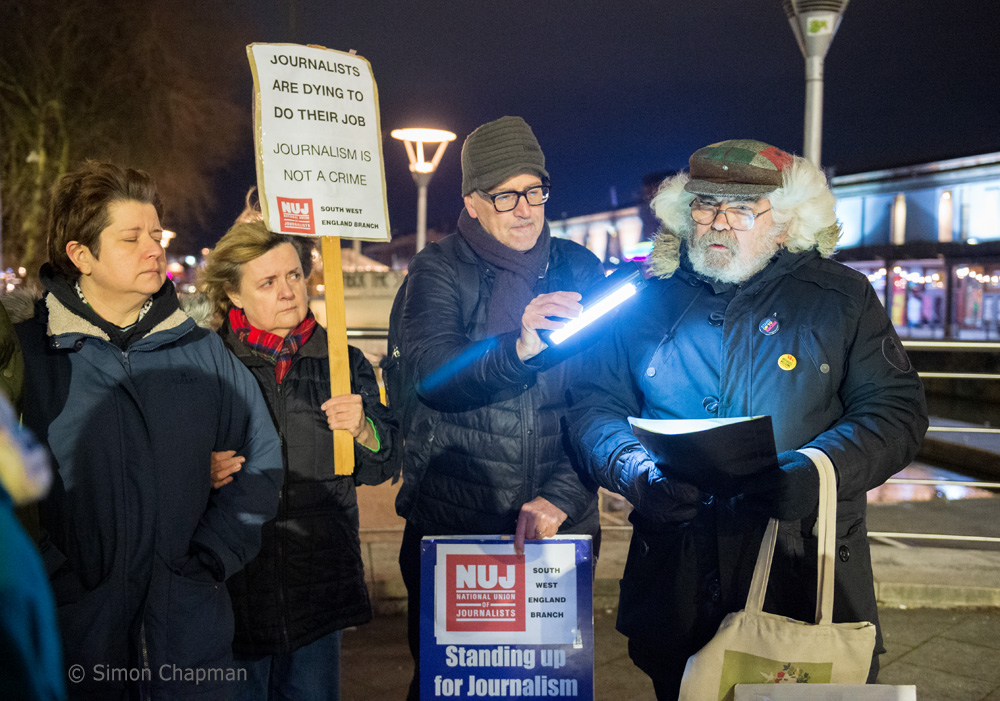
THE DEATHS of more than 150 journalists in the Israel Gaza conflict were commemorated in a solemn ceremony by members of the SW England branch of the National Union of Journalists.
Members read out the names of each of those who have died, mostly as a result of Israeli military action, since the October 7th attacks on Israel by Hamas in 2023.
The sad roll call included the names of 134 journalists in Gaza, eight in Lebanon, one in Syria and four in Israel.
The numbers given were those which the International Federation of Journalists has been able to verify – the real number of deaths in Gaza in particular is likely to be higher.
Addressing the gathering on December 10, branch chair Paul Breeden stressed that the NUJ does not take sides in the Israel/Gaza conflict. The life of each journalist is mourned equally, and the NUJ is calling on all sides in the conflict to hold an immediate ceasefire and for the release of all the hostages taken on October 7th.
He recounted the stories of several Palestinian journalists, including Mohamed Al-Masry and Hossam Shabat, who was attacked with his colleagues by the Israeli military even though their car and their clothing were clearly marked as Press.
There have been numerous reports from journalists in Gaza that they are deliberately targeted by Israeli forces, Breeden said. The NUJ and the IFJ are calling on Israel to meet its international legal obligations by ensuring the safety of journalists. The two organisations are also urging the International Criminal Court to speed up its investigations into the killing of journalists by Israel, a process which started in 2022, well before the October 7th attacks.
Breeden also showed the gathering a photo of retired Israeli journalist Oded Lifschitz, 83, who was taken hostage on October 7th and who has not been heard from since. In his working life, Lifschitz covered the attacks by Israel on refugee camps in Lebanon in 1982 and tried to promote cooperation between the Jewish and Palestinian communities.
The event ended with two poems. Branch member Alex Morss read “Do not despair, my love“ by Rolla Selbak. Mike Jempson then read his own poem, “The Objective I“.

Do not despair, my love
by Rolla Selbak [slightly adapted by Alex Morss]
Do not despair, my love
I know your name…
It was in the morning dawn
In the rubble…
In the sky…
In my arms…
Your name is with me
I saved it
You gave your story with your last breathe
And I saved your story
Do not despair, my love
I know your name
They said they were chosen
And they took… your heart
But we know… every accusation
Is confessed… in the dark
Do not despair, my love
I know your name
Like the world, entire
And the only light they’ll know is from the blazes of their own fire
Do not despair, my love
I asked the sky, to save your name
And it broke open …
And cried…
And the whole world cried…
They said… you were the dark
The deserved…
The unforgivable…
But I know your name
I know your story
I know your bravery and your truth
And I know… the one thing,
you and your truth will never be
In this this world…
Is alone
The Objective ‘I’?
(The eye of the journalist)
By Mike Jempson
When we report the world
we describe a kaleidoscope.
The essential elements may always be the same
but each person has a different view.
Each time each person looks, the pattern changes,
as do the circumstances of the viewing
and the language each chooses to interpret
what we see.
Only one thing is certain:
there is no one, simple, accurate description.
The best we can offer is an honest account
of the impression we gained from our tunnel vision,
and let others have their say.
Perspective comes
when we acknowledge
that those without access to the kaleidoscope
have a different tale to tell.
©Mike Jempson (2000)